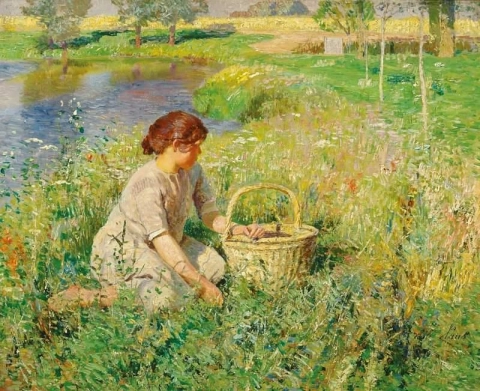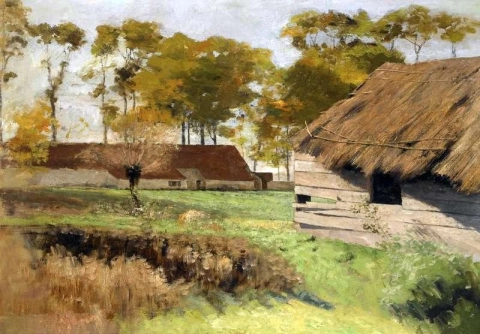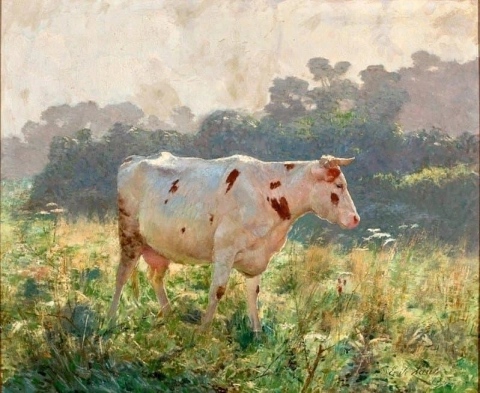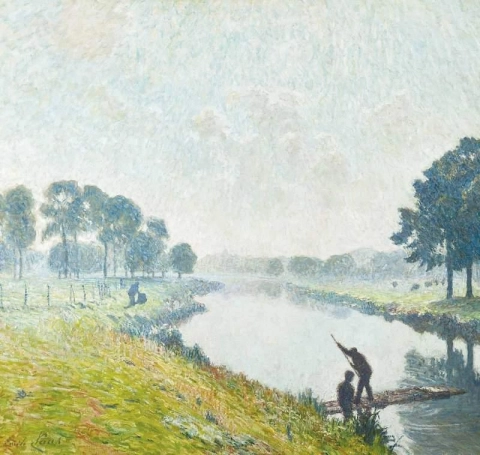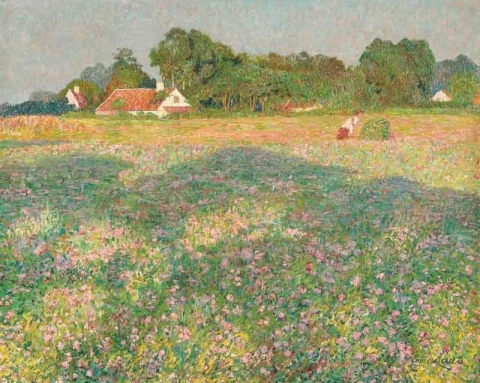
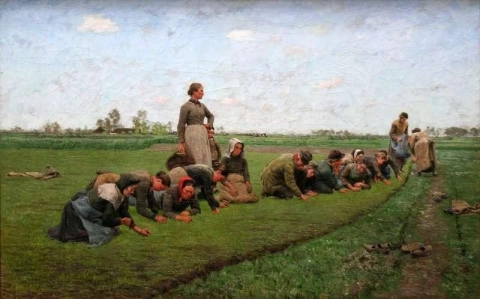
Hand painted reproductions of Emile Claus
Émile Claus (1849–1924): A Luminary of Belgian Impressionism
Émile Claus (1849–1924) was a Belgian painter whose work is closely associated with the Impressionist movement. He is best known for his remarkable depictions of rural landscapes, riverscapes, and scenes of everyday life, all infused with a luminous quality that captured the changing effects of light in the natural world. Claus’s art is celebrated for its vibrant color palette, mastery of light, and deep connection to the Belgian countryside.
Early Life and Education
Born on December 24, 1849, in Sint-Martens-Latem, Belgium, Émile Claus came from a family with a background in the arts. His early exposure to the natural beauty of the Belgian landscape had a profound influence on his later artistic work. Claus began his formal education in art at the Academy of Fine Arts in Ghent, where he studied under the guidance of prominent teachers like Louis de Taeye.
Claus’s formative years as an artist were marked by a growing interest in landscape painting, particularly rural scenes that reflected the simplicity and beauty of life in the countryside. During his studies, he was influenced by the academic tradition of realism, but he also began to develop a unique style that would later be associated with Impressionism.
Artistic Development and Style
Émile Claus’s transition to Impressionism was largely influenced by his exposure to the work of Claude Monet, Édouard Manet, and other leading figures of the movement. He was drawn to the Impressionists’ emphasis on light, color, and brushwork, and these elements became central to his artistic identity.
Claus developed a distinctive technique of loose, expressive brushstrokes, often working en plein air to capture the fleeting effects of natural light in his landscapes. His subjects were typically drawn from the natural world, such as the rivers of Flanders, rural fields, floral scenes, and the changing skies. His palette, rich in warm tones and vibrant hues, evoked the glow of sunlight and the subtleties of nature’s colors.
A hallmark of his work is his ability to render light and atmosphere. Whether painting a river at dawn or the glow of sunset over a field, Claus’s use of light imbued his works with an emotional depth and sense of timelessness. His application of color was highly sensitive, allowing him to convey the ever-changing qualities of nature and its interplay with light.
Themes and Significance
Claus’s works often depicted rural life, landscapes, and intimate moments of daily existence, portraying a world that was tranquil yet full of life. He frequently painted scenes of peasants working the land, highlighting the beauty of simple rural labor, and explored the natural world with a reverence for its serene, restorative qualities.
His riverscapes were especially significant, often capturing the reflections of water on the river's surface, where he employed light and shadow with great precision. These works were seen as a poetic meditation on the relationship between man and nature, an idea central to his artistic vision.
As an Impressionist, Claus not only sought to capture natural beauty, but also conveyed the emotional resonance of his subjects, creating a sense of peace and harmony that was deeply rooted in the Flemish countryside. He was able to evoke a feeling of nostalgia for the simple pleasures of rural life, making his work resonate with viewers long after they had seen it.
Achievements and Recognition
Throughout his career, Émile Claus became one of Belgium’s foremost Impressionist painters. His works were frequently exhibited at the Salon in Brussels, where they gained considerable recognition. He won numerous awards, including several gold medals at international exhibitions, solidifying his place among the leading artists of his time.
Claus was also a founding member of the Latem School, a group of Belgian artists in Sint-Martens-Latem who sought to foster artistic collaboration and share ideas. This community played a pivotal role in the development of modern Belgian art and helped cement Claus’s reputation as a leading figure in the Belgian Impressionist movement.
Legacy
Émile Claus’s legacy is one of quiet elegance, capturing the essence of rural life with a luminous quality that continues to captivate art lovers today. His works offer a unique insight into the relationship between light, color, and nature, and his ability to convey a sense of peaceful contemplation remains one of the defining features of his art.
His paintings are housed in prestigious collections and museums, including the Royal Museum of Fine Arts in Brussels and the Ghent Museum of Fine Arts, where they continue to be celebrated for their technical skill and emotional depth.
Where to Find Reproductions of Émile Claus’s Art
For those interested in bringing the beauty of Émile Claus’s rural landscapes and riverscapes into their homes, high-quality reproductions are available through various online galleries and art dealers. His works remain a timeless tribute to the Belgian countryside and offer an enduring connection to the Impressionist movement’s celebration of light and color.
Imagine owning an original-style painting by one of the greatest artists in history. At POD, we offer you the chance to make this dream a reality. Each canvas is faithfully reproduced down to the smallest detail, allowing you to experience the beauty of the artist’s vision in your own home.
Our reproductions are crafted by experienced painters using the finest materials and time-honored methods. We are committed to delivering works of exceptional quality that will inspire and bring joy to your family for generations to come.




